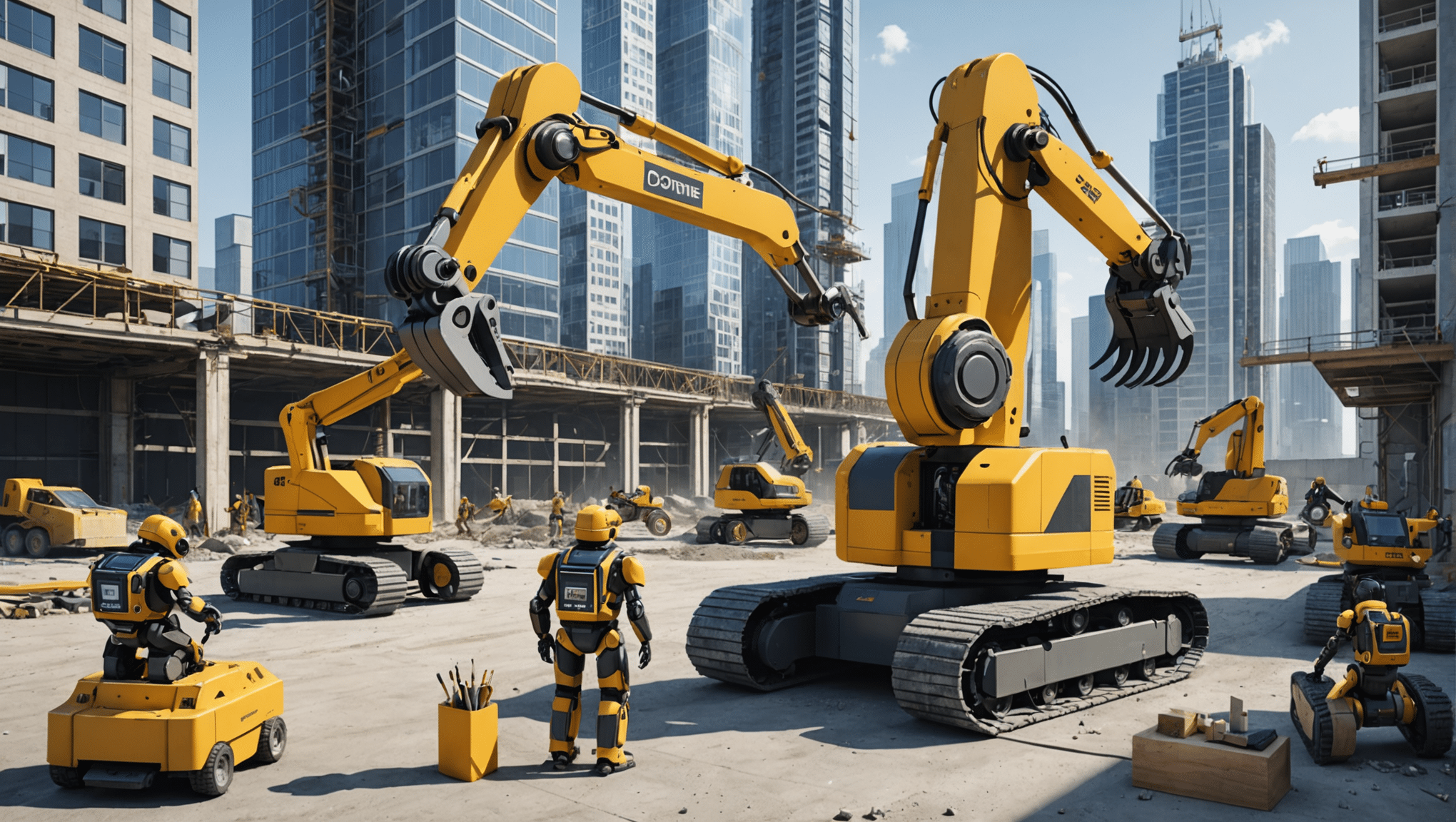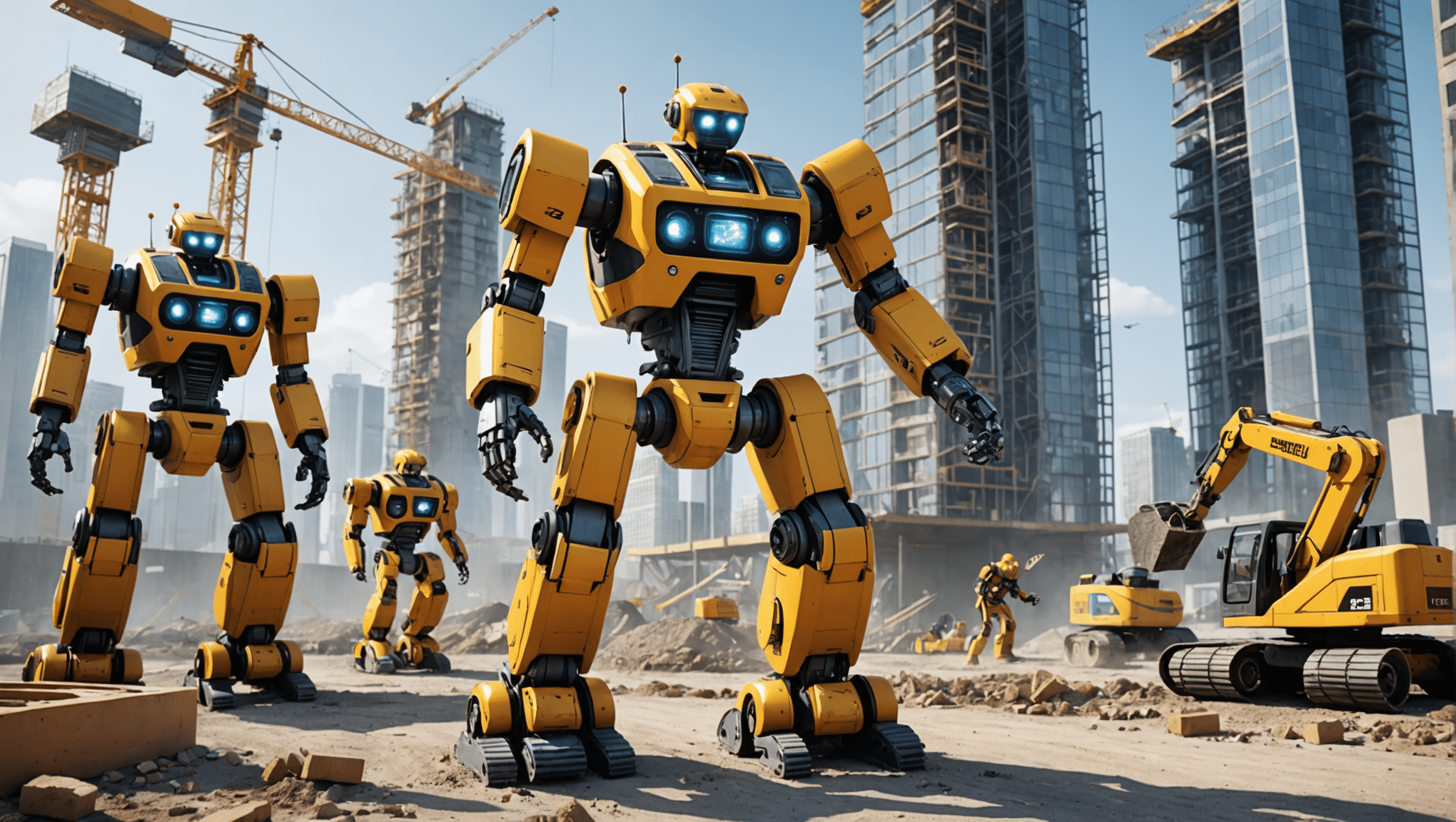Construction is evolving at a breakneck pace, and the advent of construction robots could well be the catalyst for an unprecedented transformation of the construction industry. As challenges related to labor, safety and efficiency multiply, these innovative technologies present themselves as true allies on the ground. Capable of various achievements, ranging from demolition to the paint, passing through complex constructions, robots are invited onto construction sites to take charge of tasks often considered dangerous and repetitive.
Their applications continue to grow, illustrating a bold vision ofautomation in the service of man. With projects like that of Hadrian X, a robot mason capable of building a house in less than two days, imagination shapes daily reality. Additionally, the introduction of 3D printing and connected objects is redefining traditional standards, making buildings more intelligent, efficient and comfortable. This technological integration paves the way for an era where robotics And human collaborate to build the future of infrastructure.

Table of Contents
ToggleConstruction Robots: An Ongoing Revolution in the Building Industry
There robotics is making its splashy entrance into the construction industry, promising to transform the way buildings are designed, constructed and maintained. Technological innovations offer fascinating perspectives on a future where robotization could make construction sites safer, more efficient and less costly.
An Introduction to Robotization in Construction
In the world of building, the search for efficiency and safety has become essential. Construction robots, capable of performing tasks that are both repetitive and dangerous, are emerging as ideal solutions to meet these challenges. Whether for the demolition, there paint, or even the construction Strictly speaking, these autonomous machines take over responsibilities that, until now, have fallen to human workers.
Ambitious projects, such as ROSBIM project, integrating robotics at the heart of construction sites, illustrate this significant development. The developed interface allows the deployment of robots capable of carrying heavy loads, thus optimizing work in the field while reducing the risk of occupational injuries.
The Impact of Robots on Safety and Efficiency
One of the most significant advantages of construction robots is their ability to improve security on construction sites. By taking on tasks considered dangerous, such as lifting heavy weights or working at height, they help minimize the risk of accidents. A reduction in the fatigue physical feeling felt by workers is also a direct consequence of their use.
The robots are also designed to operate with unparalleled precision. From the to masonry, through quality control, their automation helps reduce common human errors. This improvement in task execution contributes to overall lower construction costs, providing businesses with an opportunity for increased competitiveness.
By adopting these new technologies, the construction industry (BTP) is entering an era where every task, every movement is optimized. Innovative tools, such as the Hadrian X, a robot mason that can build a house in less than two days, are redefining production standards in the sector.
Technological Advances at the Service of Innovation
Construction robots represent an integral part of current innovations in technology in construction. 3D printers capable of creating complex structures using sturdy materials, such as glass blocks, are a perfect example of recent advances in the field. Thanks to projects like the world’s largest 3D printed neighborhood in Texas, the cityscape could quickly evolve.

On the other hand, the use ofconnected objects is also transforming the way buildings are designed and managed. These intelligent technologies make it possible to optimize energy consumption, improve occupant comfort and ensure an increased level of security in existing and future structures.
The decline of human workers in certain unpleasant tasks raises questions about robotization: will robots replace workers entirely? The answer lies in the harmonization of human and machine. Construction robotization aims to increase human skills, allowing them to focus on more complex and exciting tasks.
Construction robots do not replace humans but become partners in creation. By allowing workers to refocus on creative and technical aspects of work, they strengthen innovation and productivity within the industry.
Challenges to Overcoming Widespread Adoption
While the benefits are numerous, the widespread adoption of robots in construction is not without challenges. Resistance to change, operator training and the need for seamless integration between robots and human teams are all obstacles to consider. Additionally, initial investments in these technologies may seem prohibitive for some companies in the sector.
Companies must therefore weigh these considerations carefully. Awareness initiatives and appropriate training are essential to foster a culture of acceptance of robotics, both among workers and site managers.
In short, the robotization in the construction industry is a profound transformation, the impact of which will be widely felt over the coming years. The challenge is to navigate this evolution while considering the human aspect, thus ensuring a respectful balance between advanced technology and traditional know-how.
To explore more about these innovations and their impact on the sector, you can consult the following articles:














